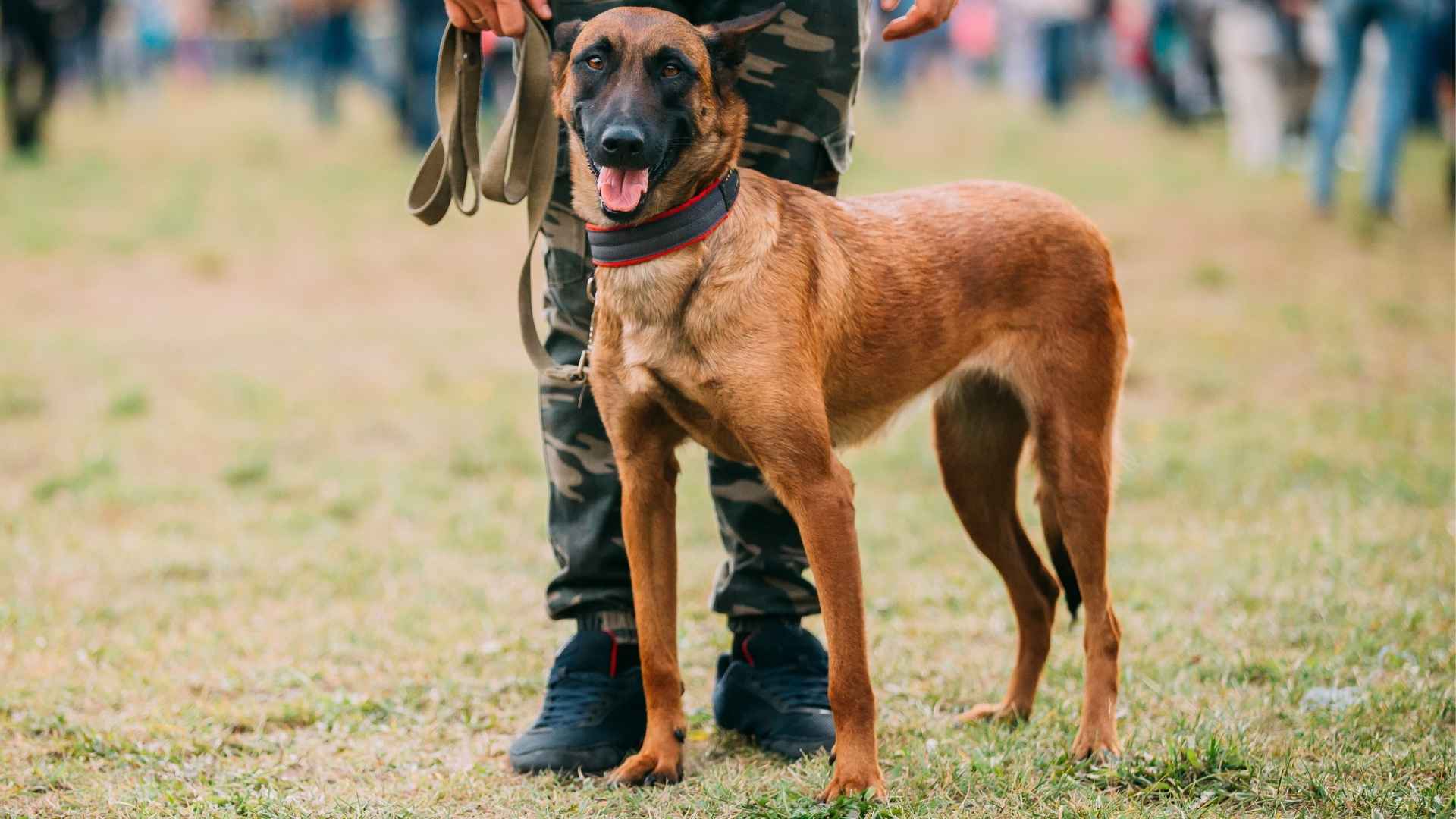They’ve saved lives, uncovered bombs, and even parachuted into combat zones. And yet, few people know that military dogs have served in every major U.S. conflict since World War I.
These canine heroes aren’t soldiers in their own right. Trained to detect explosives, chase down enemies, and protect their handlers, certain dog breeds have proven indispensable on the battlefield.
Their loyalty, intelligence, and endurance make them more than pets—they’re partners in combat. Not all breeds can handle the demands of military life. Only a select few make the cut, chosen for their strength, obedience, and focus.
If you’ve ever wondered which breeds serve alongside troops around the world, this article uncovers the ones trusted in high-stakes missions. From frontline operations to search and rescue, dogs are built for duty.
Dog Breeds Used In Military Missions
1. Dutch Shepherd
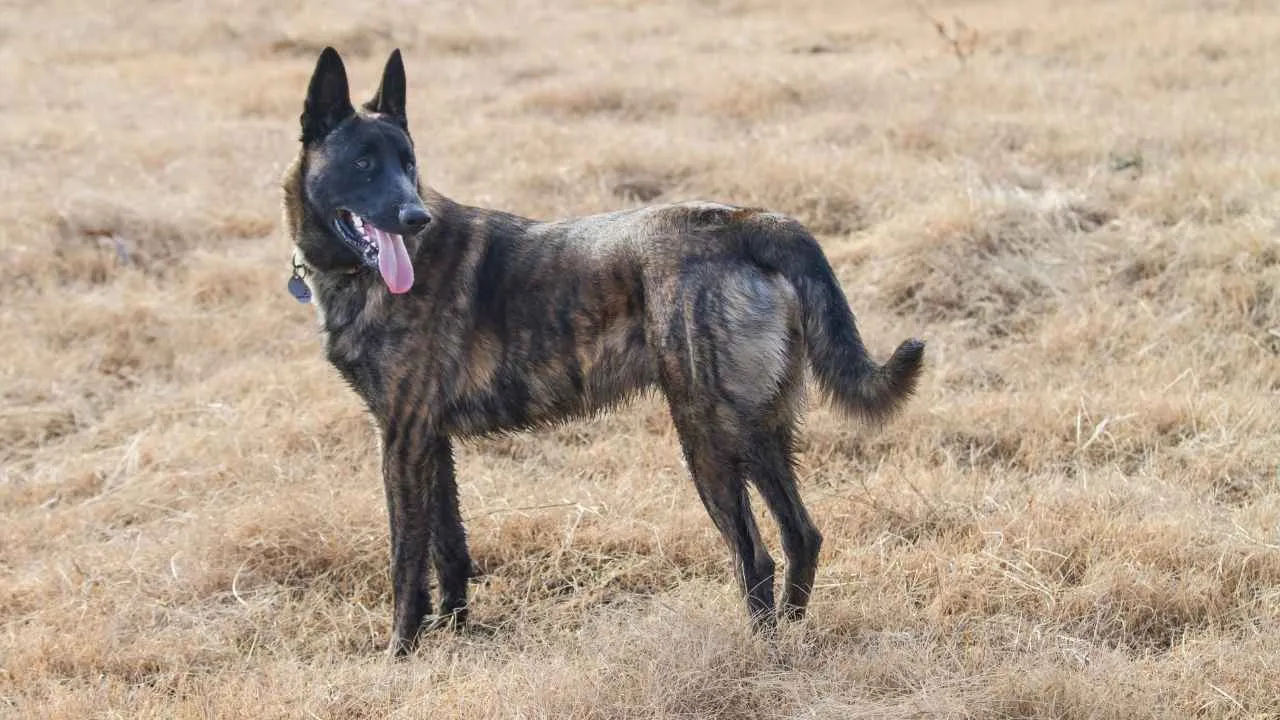
The Dutch Shepherd has a strong herding background, which contributes to its natural drive and quick response to commands. Their ability to focus amid noise and distraction gives them an operational edge. This is especially useful in fast-changing mission environments.
Highly Adaptive in Diverse Terrain
Their rough or short coats provide natural protection in a wide range of climates — from dry zones to cold forests. Strong paws, lean muscle mass, and a well-proportioned body allow for long-distance tracking. They rarely show fatigue during continuous ground coverage.
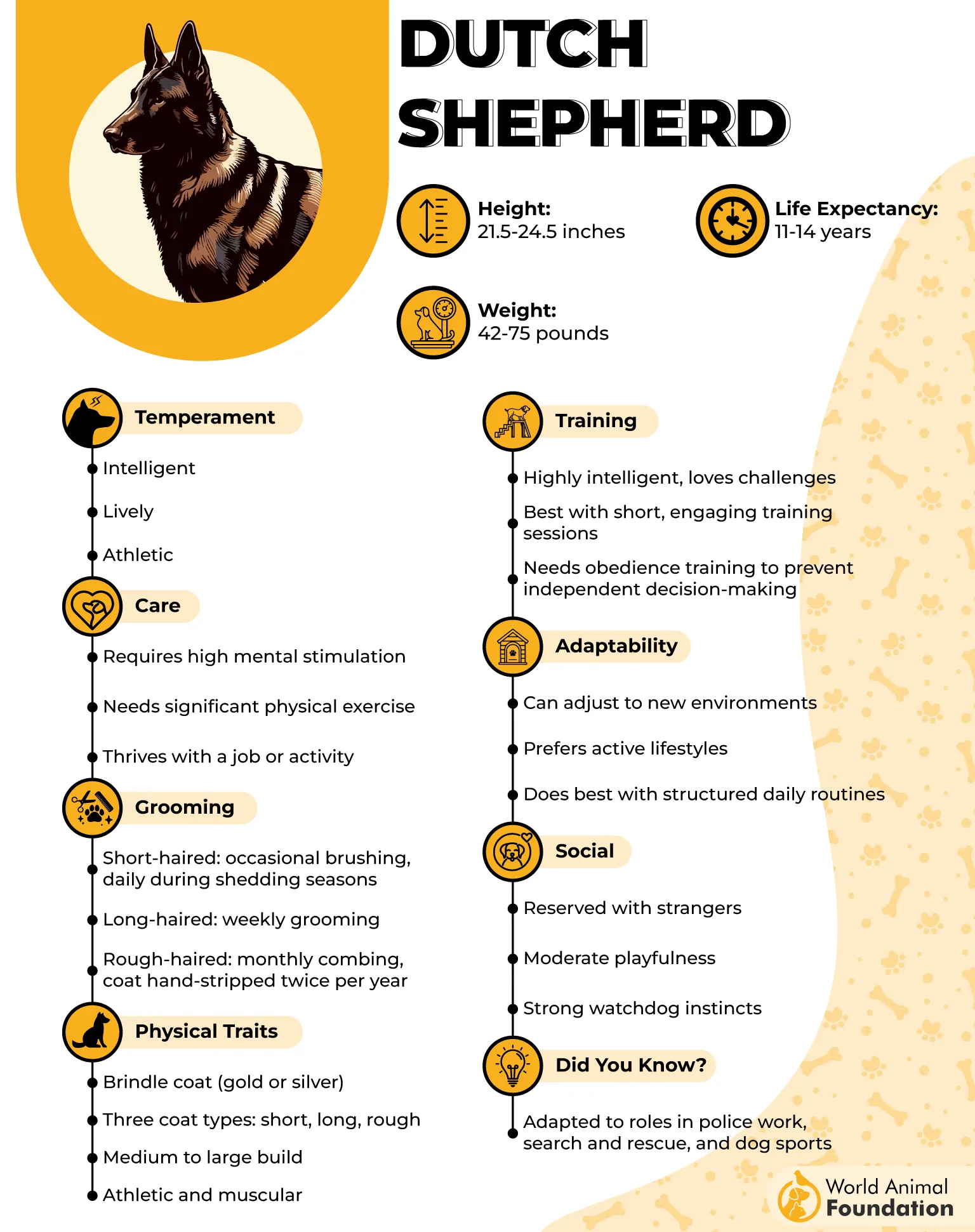
Trusted for Detection and Scent Work
They excel at detecting explosives and narcotics due to a sharp olfactory sense and high scent memory. The breed’s mental clarity supports scent-trail consistency, even over long durations. These qualities make them assets during infiltration and checkpoint operations.
Used by Special Units in Europe
The Dutch Shepherd is one of the few military dog breeds still commonly used by European armed forces for elite tasks. Their blend of loyalty, stamina, and trainability makes them stand out, especially in missions where precision and independence are equally vital.
2. Doberman Pinscher
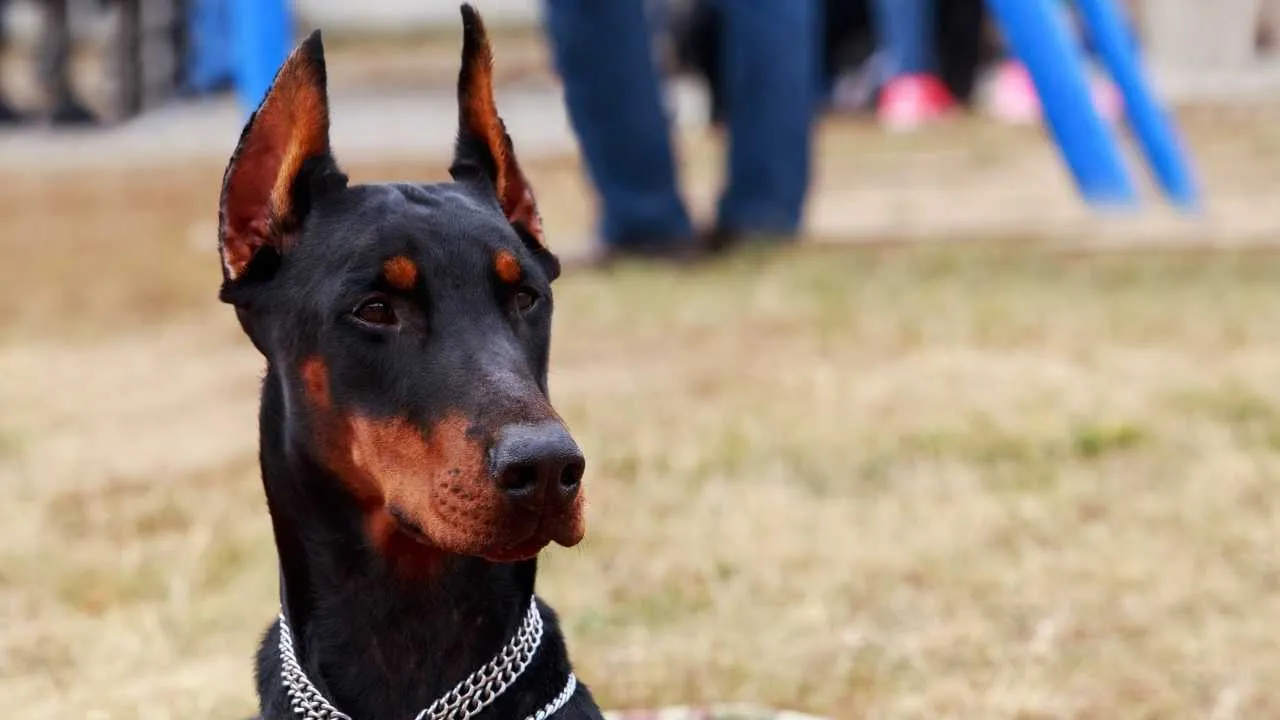
The Doberman’s compact musculature and straight-backed build allow for explosive acceleration and fast redirection. Their quick reaction time is essential during interception or patrol missions. When properly trained, they retain multi-command recall with high consistency.
Strategic Behavior and Area Control
Dobermans are often chosen for missions that involve perimeter defense or building security due to their territorial awareness. Their vision, paired with precise listening ability, supports silent threat tracking. They respond effectively in confined or urban operational zones.
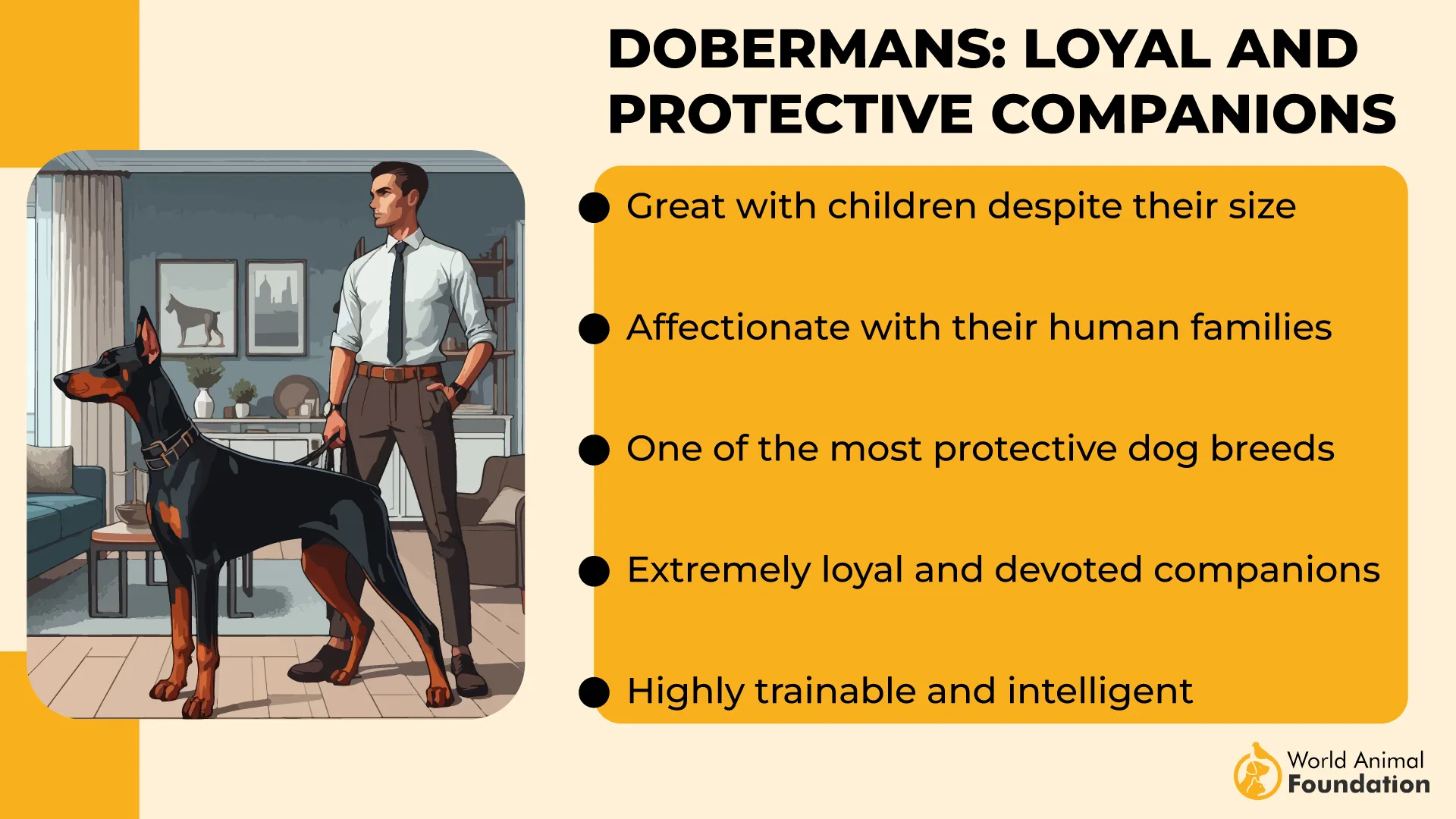
Reliable for Dual Roles in the Field
Used as both patrol and detection dogs, they fit into tactical units requiring mobility and versatility. Their structured energy output helps them hold position without becoming overstimulated. These traits support a range of military working dogs assigned to variable-duty schedules.
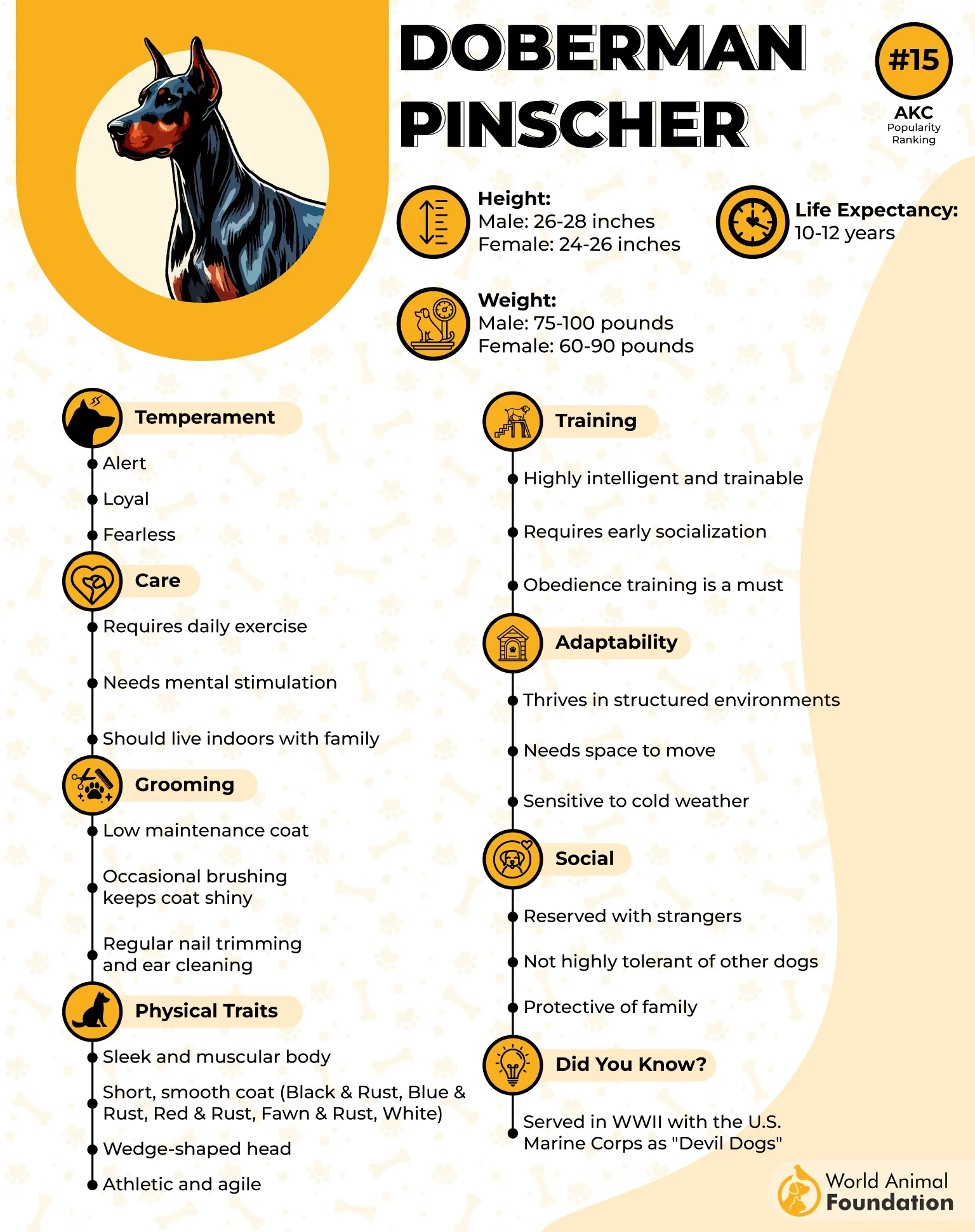
Noted Breed in WWII Combat Units
Dobermans were among the first breeds formally enlisted in U.S. military and police forces during WWII, as per DPCA. Their reputation as focused guard dogs continues in modern K9 units trained for base patrol, scouting, and controlled aggression scenarios.
3. Boxer
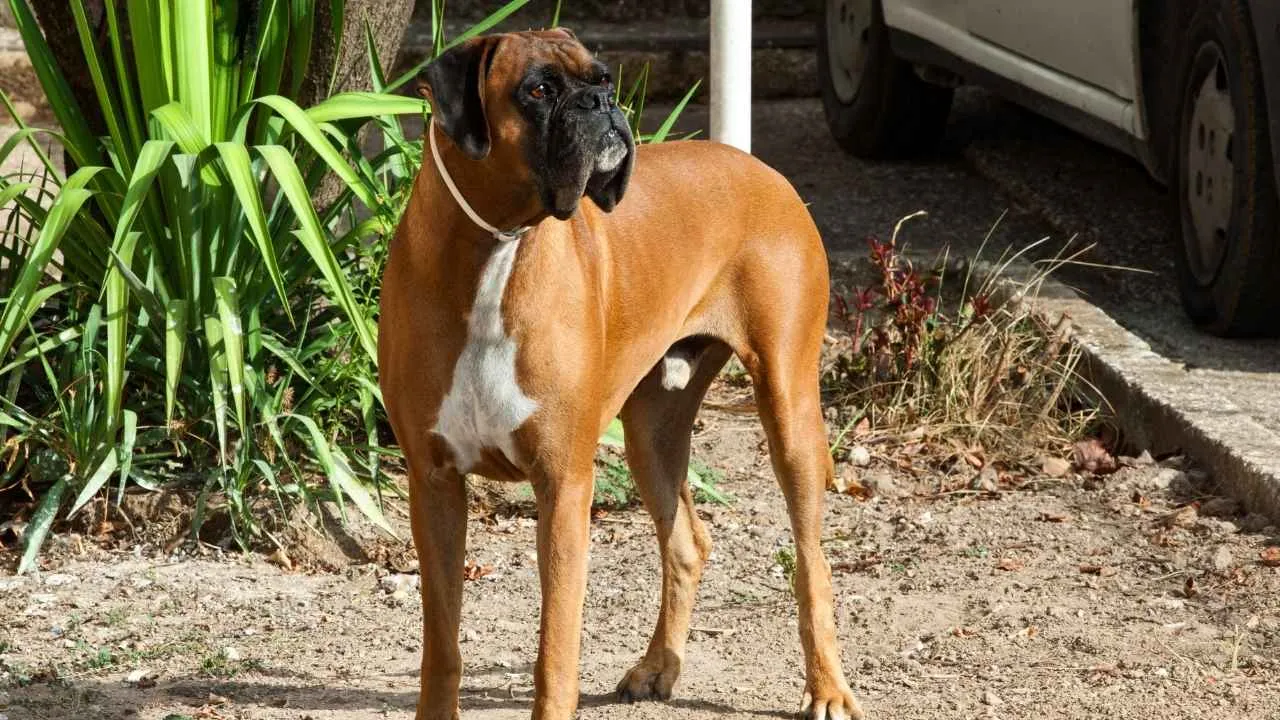
Boxers respond swiftly to motion and sound, making them reliable for tasks involving patrol and alert roles. Their strong jaws and muscular legs also allow for effective controlled restraint. Their posture alone can act as a deterrent during search operations.
High Energy and Mental Engagement
They require constant interaction and focused tasks to keep their minds stimulated. Many dog trainer teams rely on their eagerness to learn and their consistent response to structured drills. This makes them especially effective in routines requiring repetition and consistency.
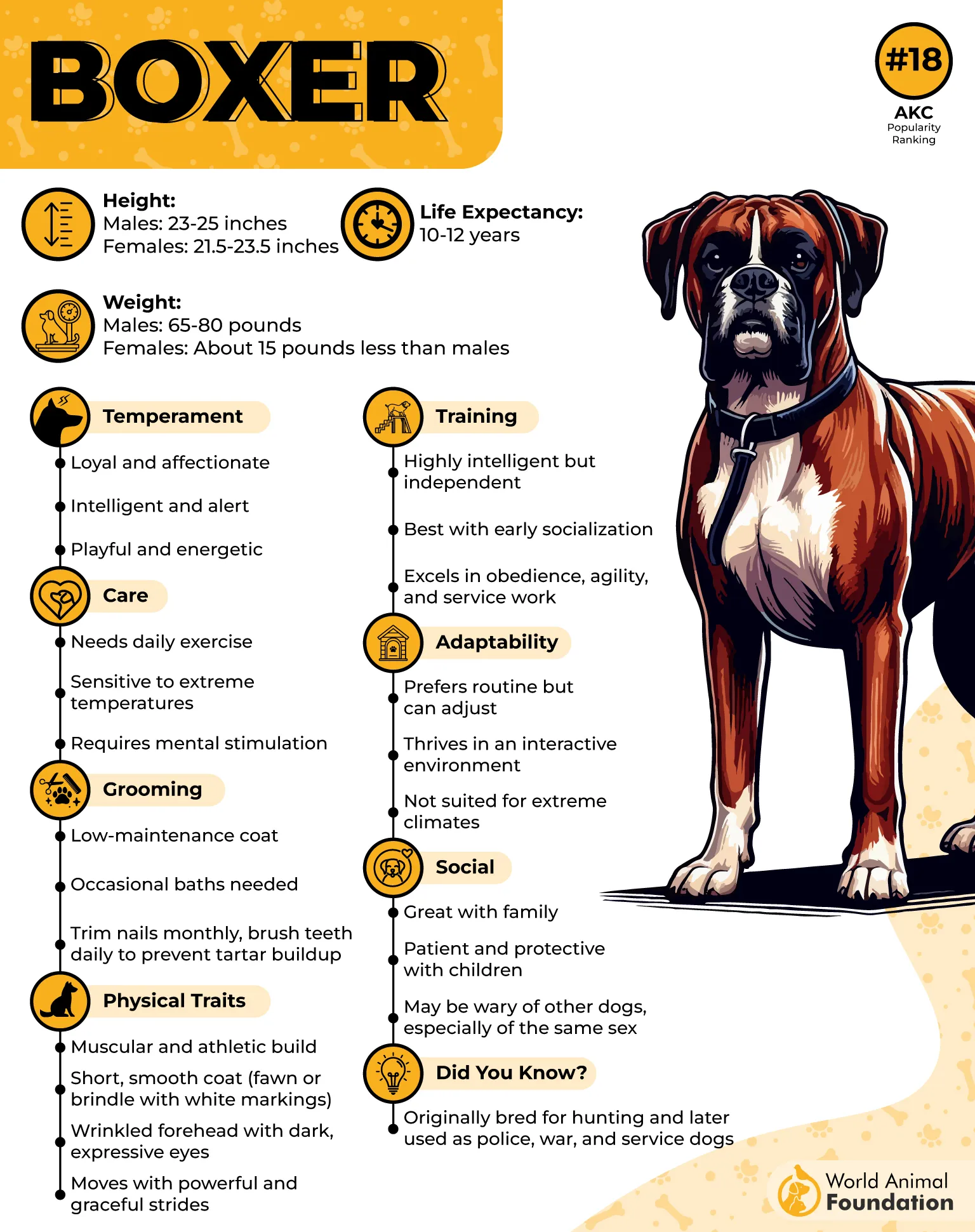
Responsive Under Human Command
Boxers bond deeply with their handlers, making communication in the field fluid and natural. Their facial expressions and body posture make it easier for handlers to gauge stress and attention levels. This helps in mission scenarios where timing and coordination are critical.
Worked in Military Roles During World Conflicts
The Boxer has a history of fulfilling military service roles, especially during both World Wars, as mentioned in the AKC. They were used for delivering messages, locating wounded soldiers, and acting as loyal canine companions in remote war zones.
4. Rottweiler
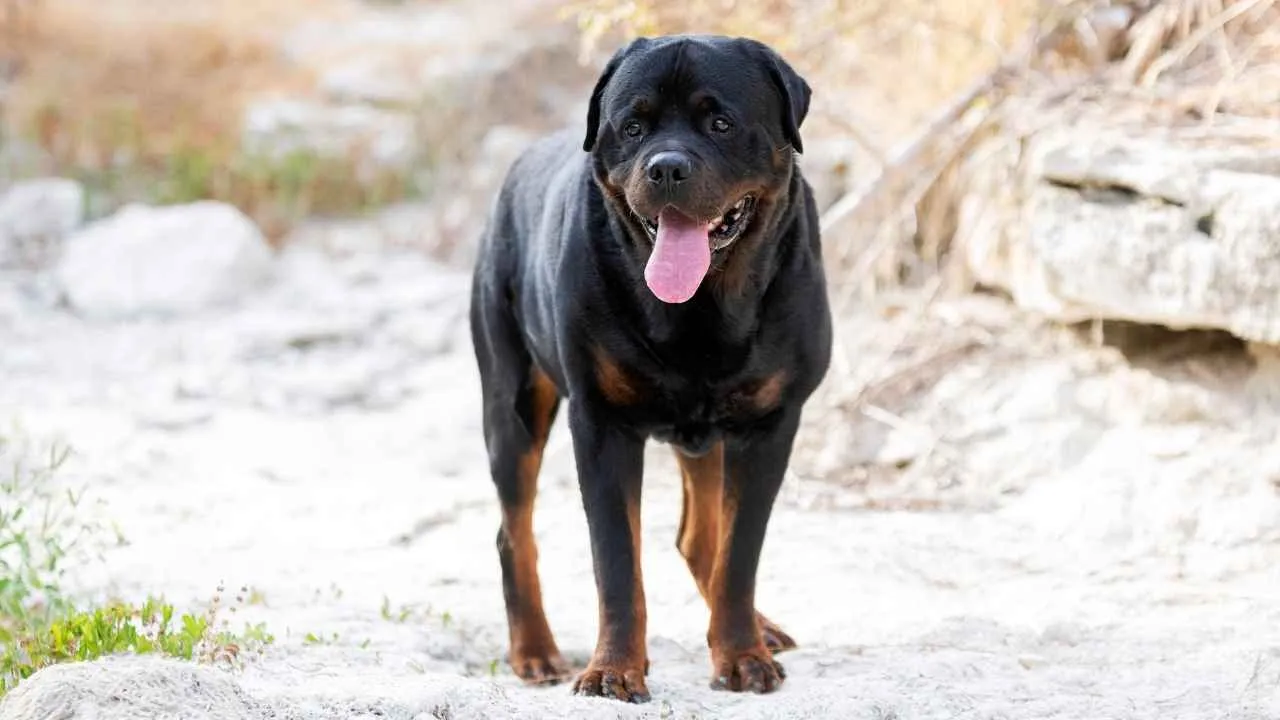
Rottweilers have a compact, muscular build that supports sudden bursts of strength and controlled takedowns. Their joint structure and body balance help them remain steady under pressure. This is valuable during perimeter control or physical apprehension tasks.
Unwavering Focus and Clarity Under Stress
The breed maintains strong nerves and clear judgment in unfamiliar or chaotic surroundings. They’re not easily startled, making them suited for missions involving crowds, noise, or confined areas. Their stable temperament supports consistent handler communication.
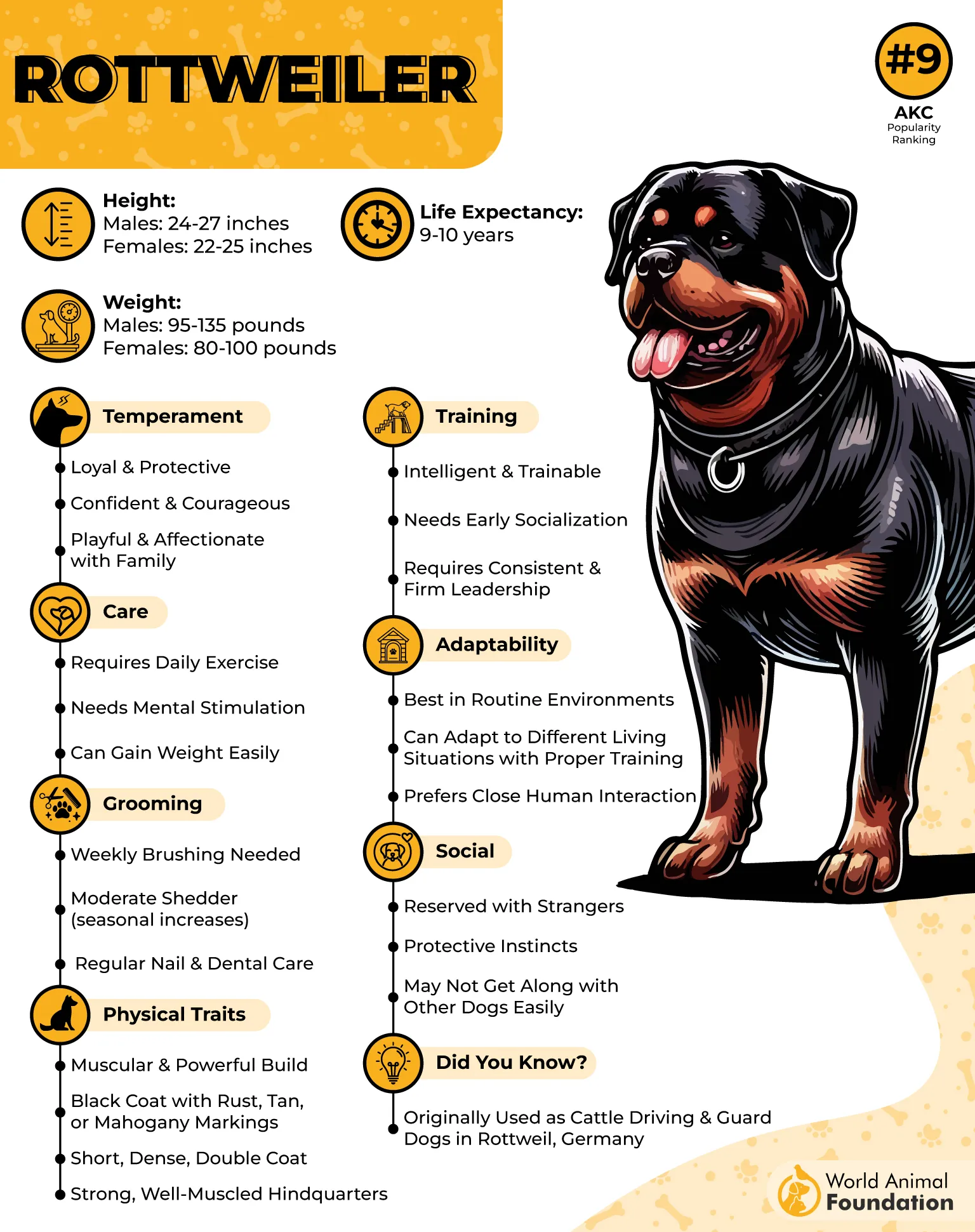
Protective Without Being Impulsive
Rottweilers are known for their measured protectiveness — they don’t act on instinct alone but on trained cues. This makes them ideal for securing high-value areas or guarding personnel. Their bite force and restraint work in balance when well-trained.
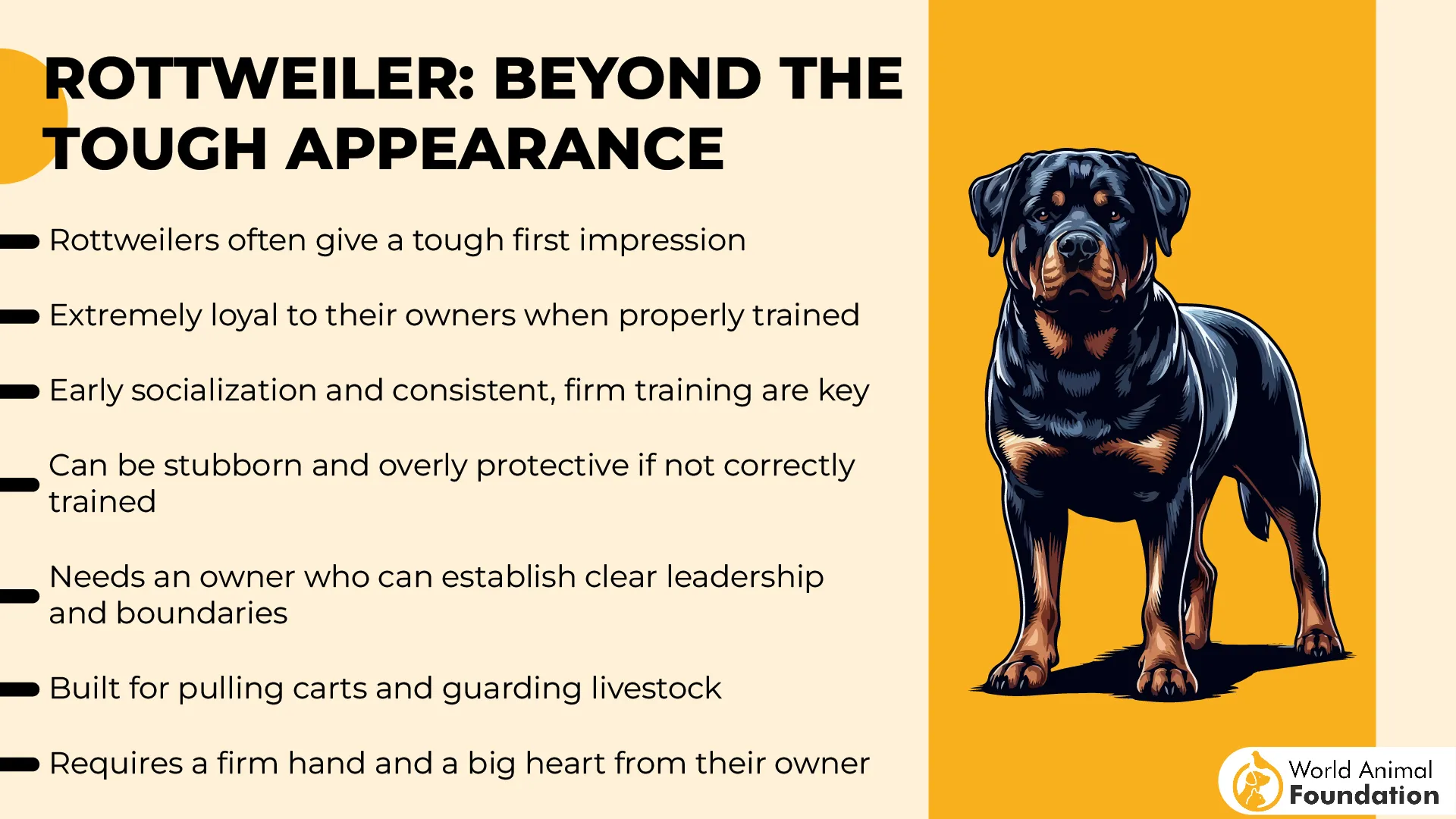
Widely Known For Jaw Precision
Rottweilers can exert a bite force of over 300 PSI, one of the highest among working breeds. This is not only about pressure — they have jaw control that enables tactical response during restraint without over-engagement.
5. Giant Schnauzer
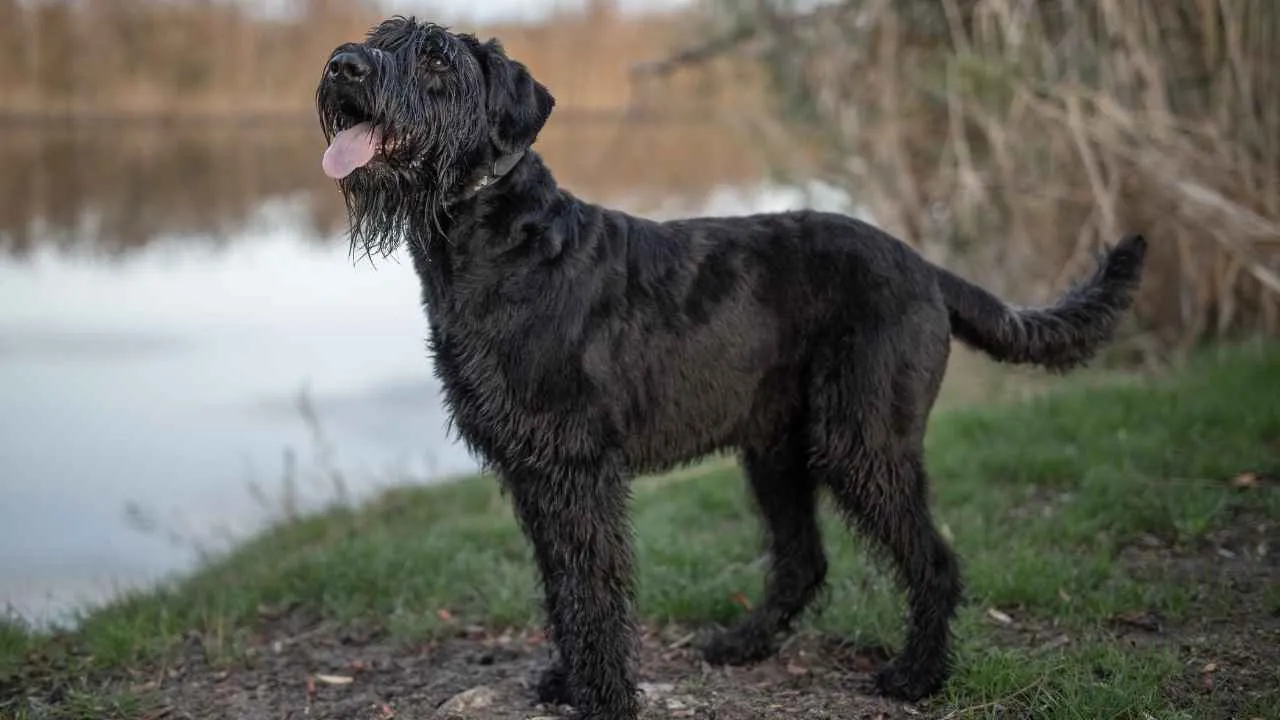
The Giant Schnauzer’s sharp expression reflects a deeply rooted guarding instinct. Their high situational awareness and deep bark make them excellent perimeter dogs. In military contexts, they respond quickly to sudden changes without needing repeated commands.
Physically Powerful and Agile
With strong bone density and tightly packed muscles, they have the force to bring down adult human targets if needed. Despite their size, they remain surprisingly agile and show impressive flexibility during chase work. Their stride is efficient, not clumsy.
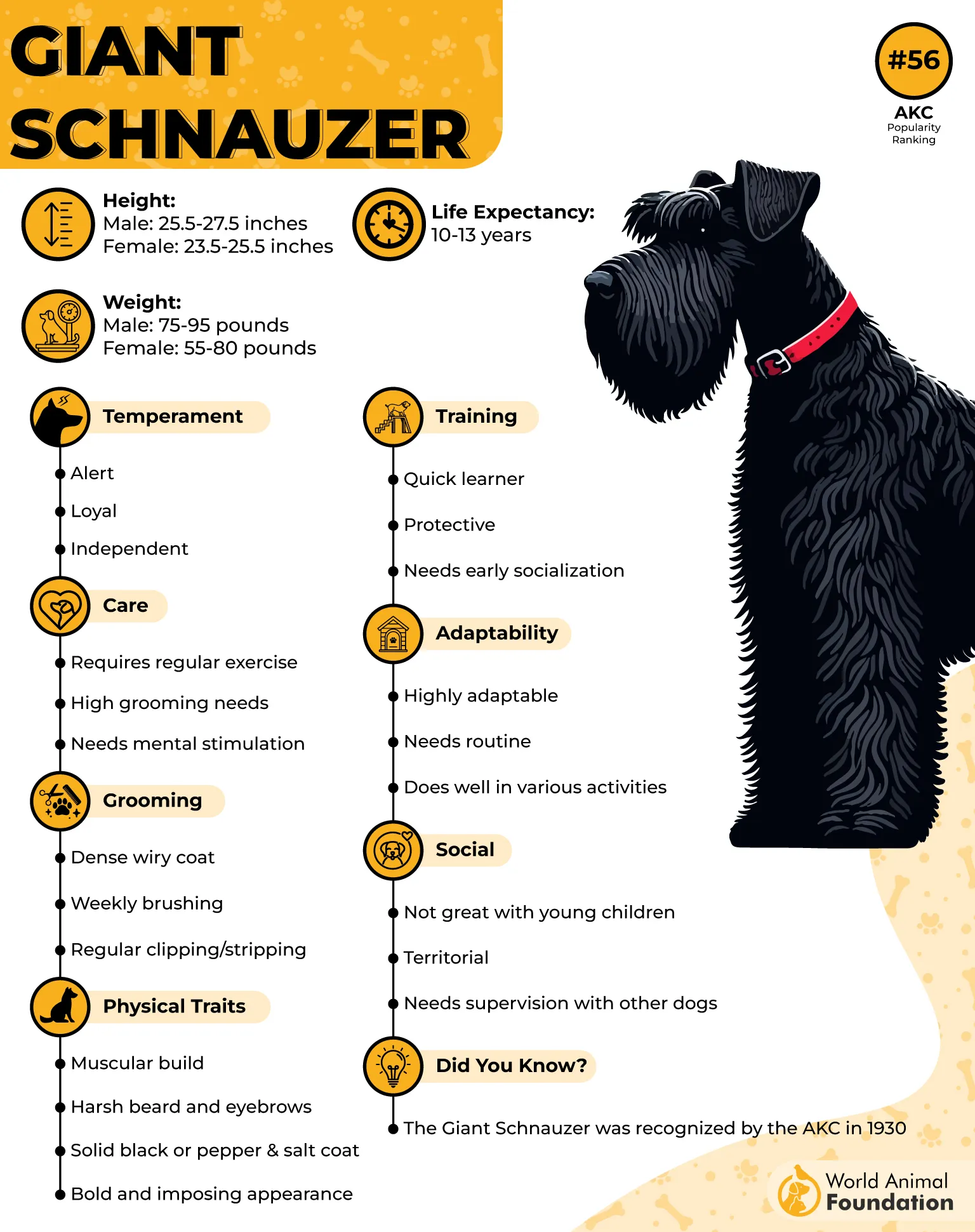
Trainability That Matches Intelligence
This breed is known to form tight bonds with a single handler, which enhances training success during focused programs. They thrive in structured environments where clarity and consistency are present. Tasks requiring step-based memory often come naturally to them.
One of the Few AKC Working Breeds With a Beard
According to the Showsight Magazine, a highly recognizable feature of the Giant Schnauzer is its coarse facial hair, not just aesthetic, but historically developed to protect during bites. While other breeds rely on jaw strength alone, the beard once shielded vital areas during physical conflict.
6. Alaskan Malamute
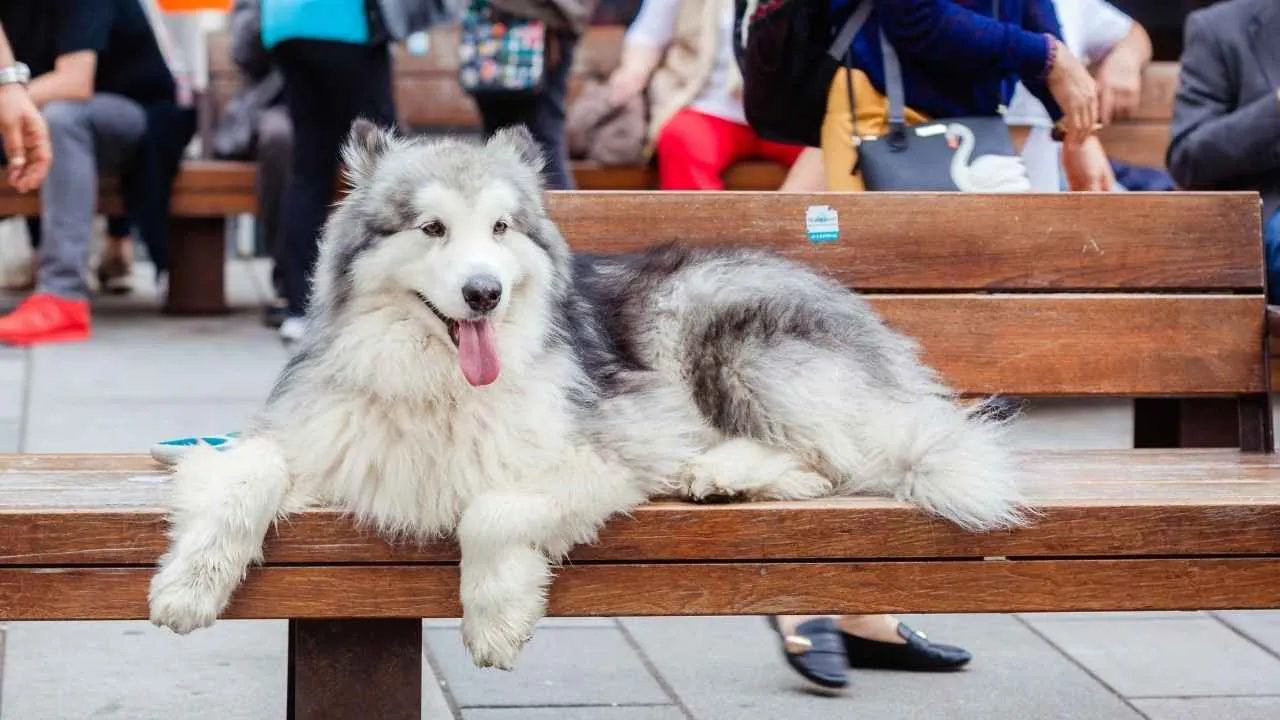
The Alaskan Malamute is built with dense bone structure, broad shoulders, and powerful hindquarters. These traits give it strong pulling capacity, often exceeding its own body weight. In logistics-based missions, this strength proves valuable in snow-covered or rugged terrains.
Highly Cold-Tolerant Breed
Their thick double coat insulates them against extreme temperatures, with the undercoat reaching up to two inches in depth. They remain physically active and alert in environments that would slow down most other working breeds. This makes them fit for missions in subarctic zones.
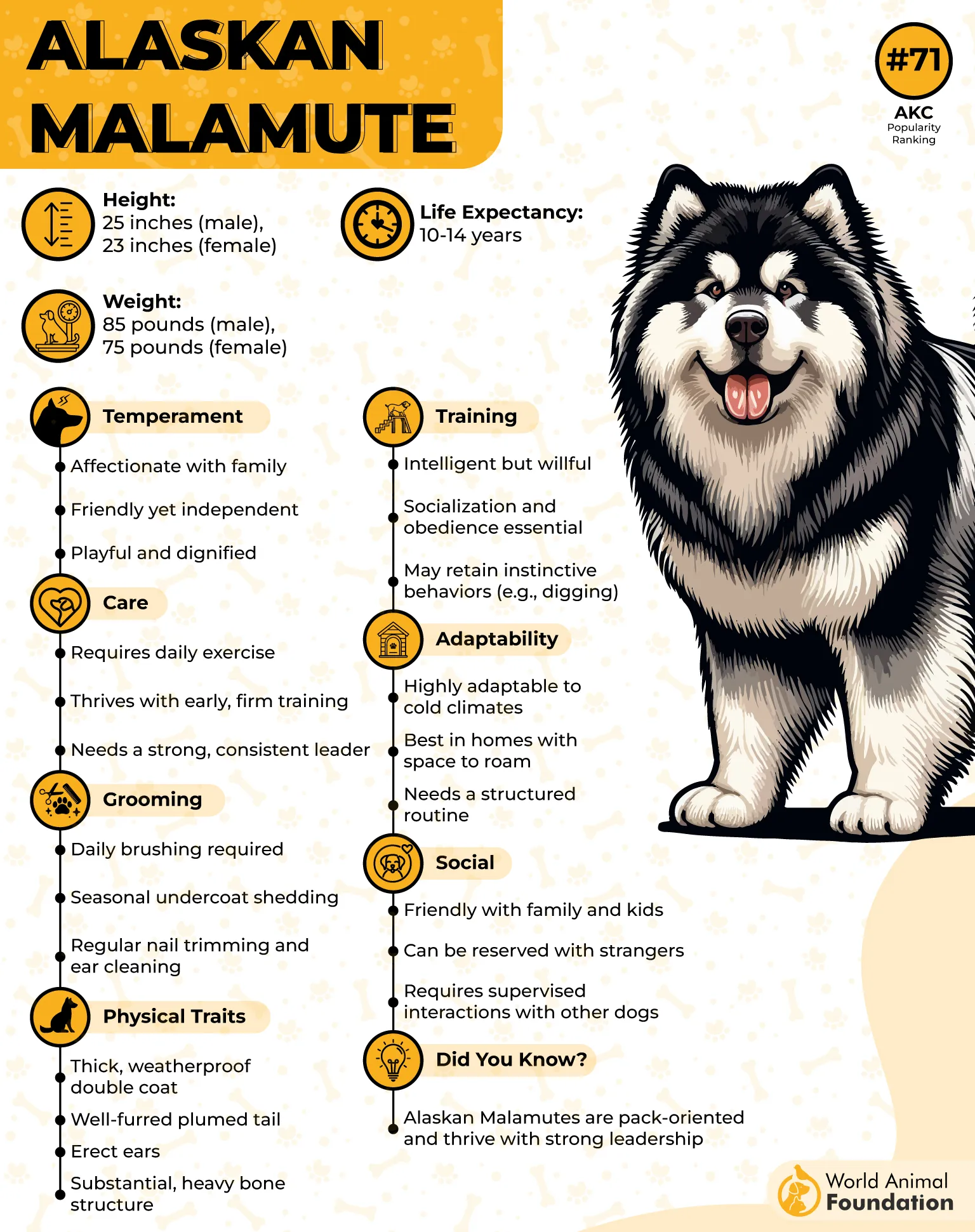
Independent and Self-Reliant
Unlike hyper-responsive breeds, Malamutes tend to make their own decisions in challenging settings. This self-reliance helps when navigating isolated zones without continuous handler input. It’s a behavioral trait often relied on during exploratory or trail-establishing tasks.
Famous for Strength-Based Roles
A known fact is that Malamutes were once part of heavy supply runs during polar expeditions due to their hauling efficiency, as Zealandia Pets claims. Their muscle endurance and hardiness continue to be acknowledged in high-load support operations across cold-weather units.
7. Staffordshire Bull Terrier
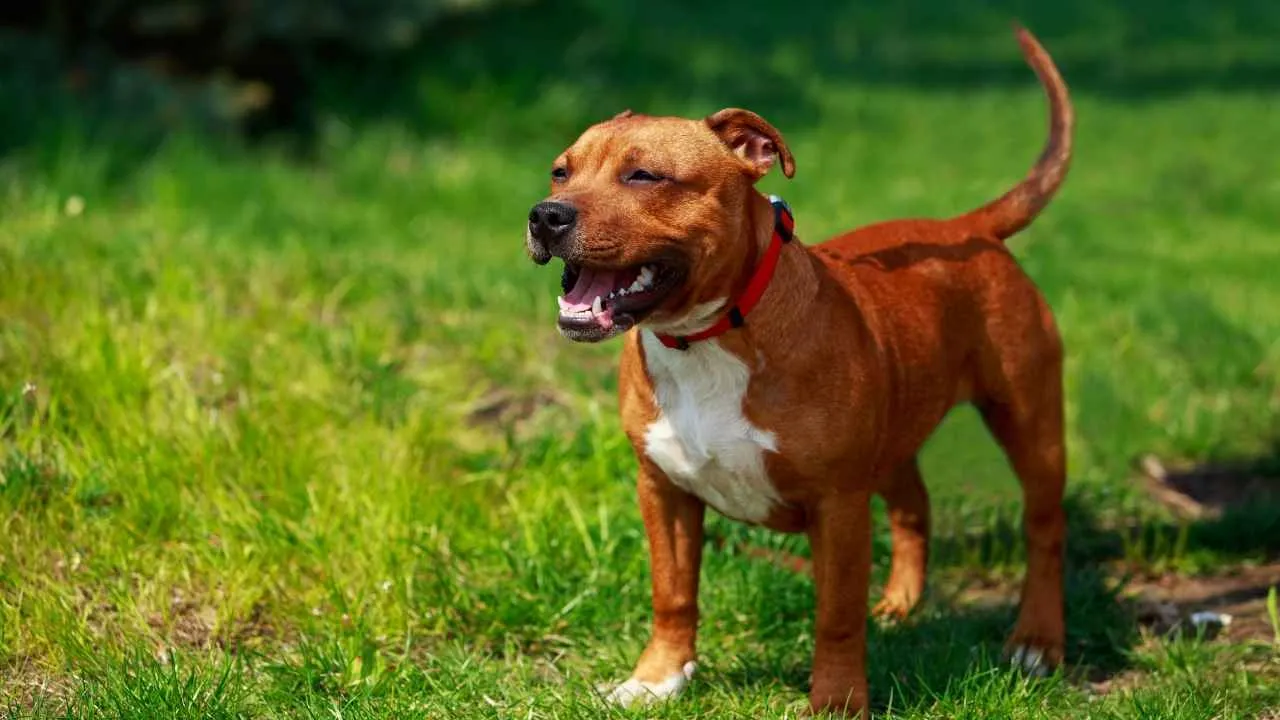
The Staffordshire Bull Terrier is compact but densely built, giving it natural power without needing added mass. Its strong bite force and powerful limbs offer high grip strength in training-based scenarios. Their physicality allows quick bursts of energy during short-target movements.
Mentally Tough and Unshaken by Noise
They’re known for their extremely stable nerve responses and resilience to loud, chaotic settings. This makes them valuable during exposure to flash-bangs or gunfire in urban drills. Their confident posture and mental fortitude allow them to remain focused under pressure.
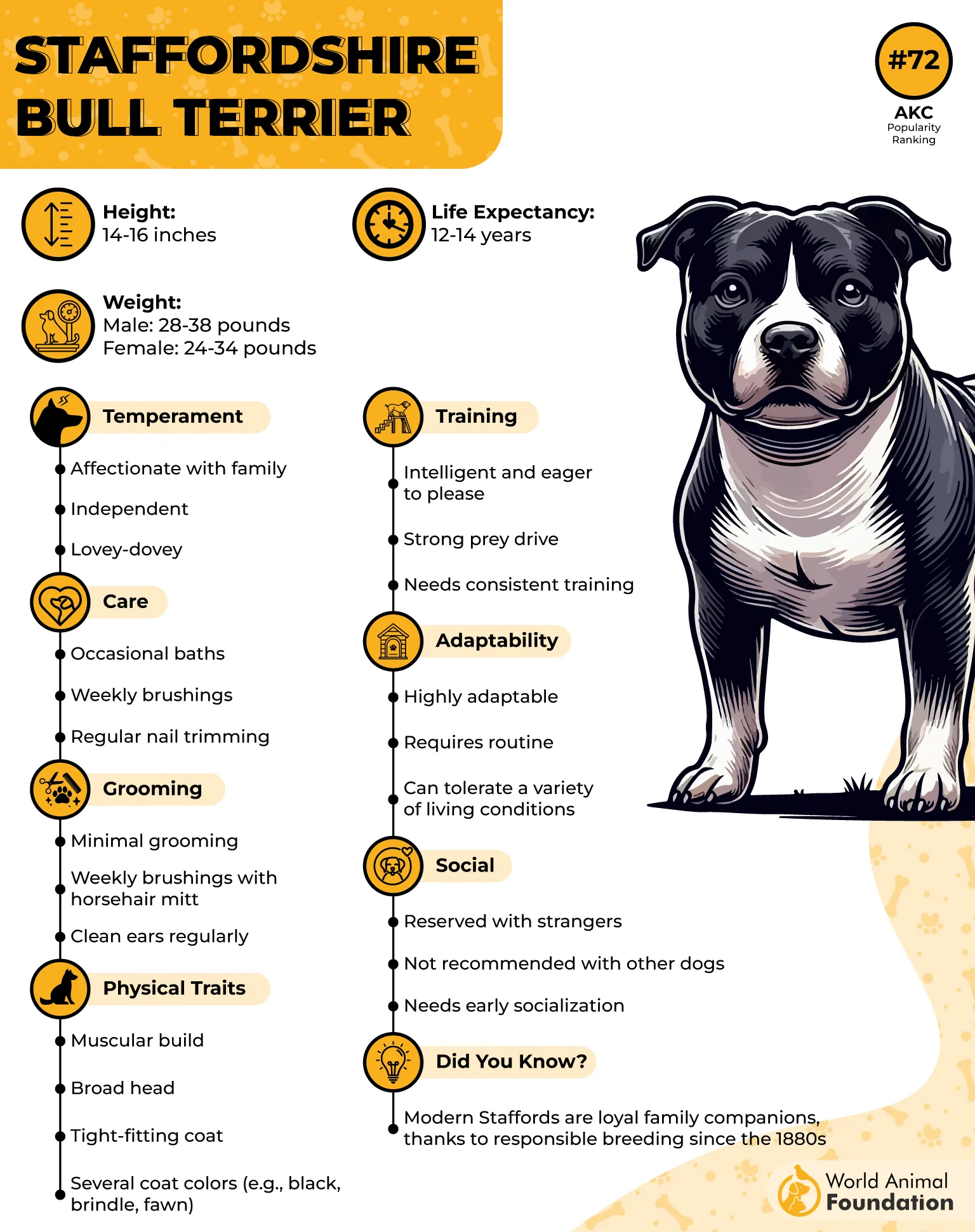
Excellent Handler Bond and Loyalty
This breed develops a sharp bond with its handler and tends to work best in close-contact tasks. They respond precisely to voice cues and react quickly in one-on-one field commands. This responsiveness often compensates for their compact size in controlled settings.
Nicknamed the ‘Nanny Dog’ in Britain
While the title may sound soft, it reflects their deep loyalty and control traits essential in military companion roles. Their high pain tolerance and consistency in following through make them dependable once trained for specific task sequences.
8. German Shepherd
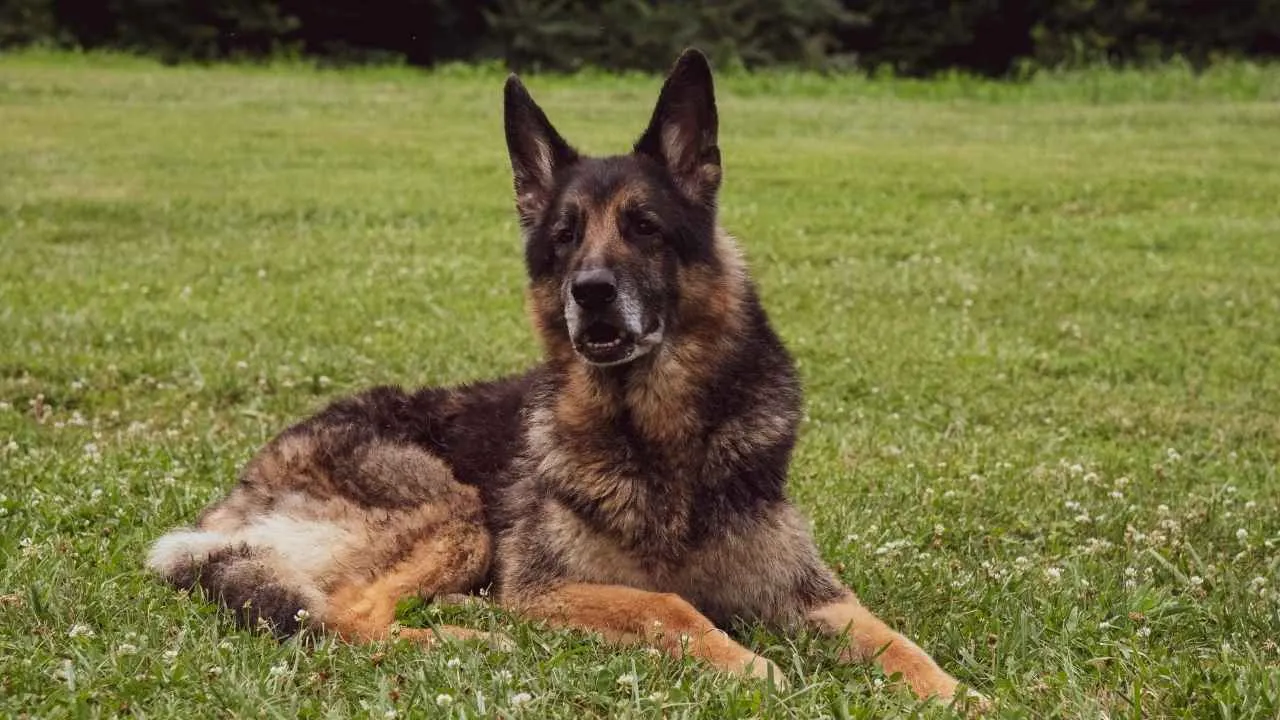
German Shepherds consistently score among the top breeds in obedience trials and structured task learning. Their ability to retain complex commands makes them ideal for specialized roles. This includes tracking, patrol, and multi-phase detection assignments.
Endurance and Controlled Power
A well-structured frame allows them to carry gear, clear obstacles, and maintain pace with handlers across extended distances. Their gait supports sudden sprints without sacrificing control. Strong hips and shoulders enable push-and-pull maneuvers during takedowns or tactical entry.
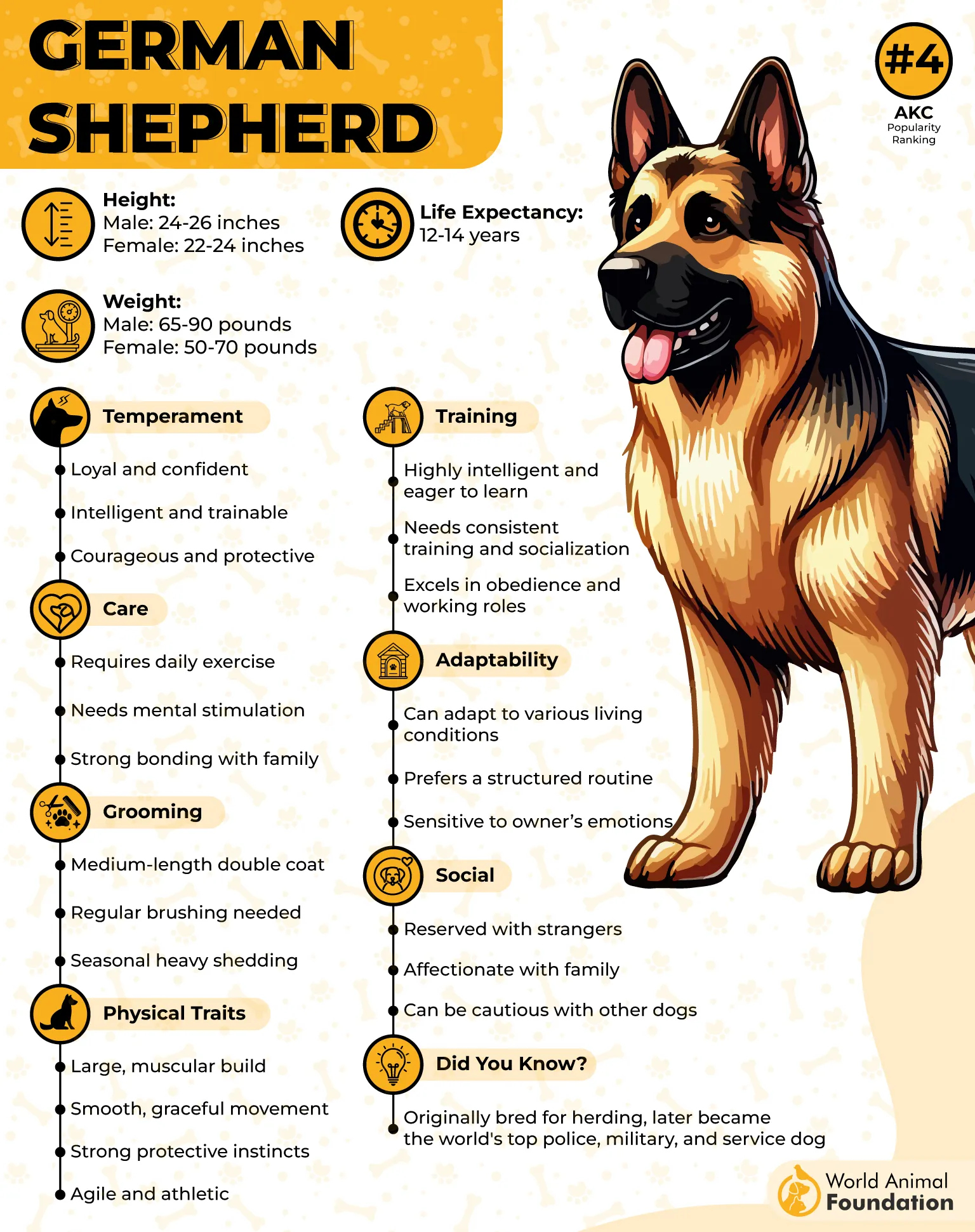
Emotional Intelligence and Stability
They respond to voice tone, body language, and subtle signals more efficiently than most working breeds. This emotional sensitivity allows handlers to communicate nonverbally in the field. It also helps them differentiate between threats and neutral presences.
Famous Trait Still Recognized Worldwide
A German Shepherd named Filax of Lewanno was honored in 1917 after leading 54 wounded soldiers to safety, as claimed by Tearmannair. This instinct to protect and act decisively in chaos is still seen in the breed today — a trait deeply valued in live operations.
9. Belgian Malinois
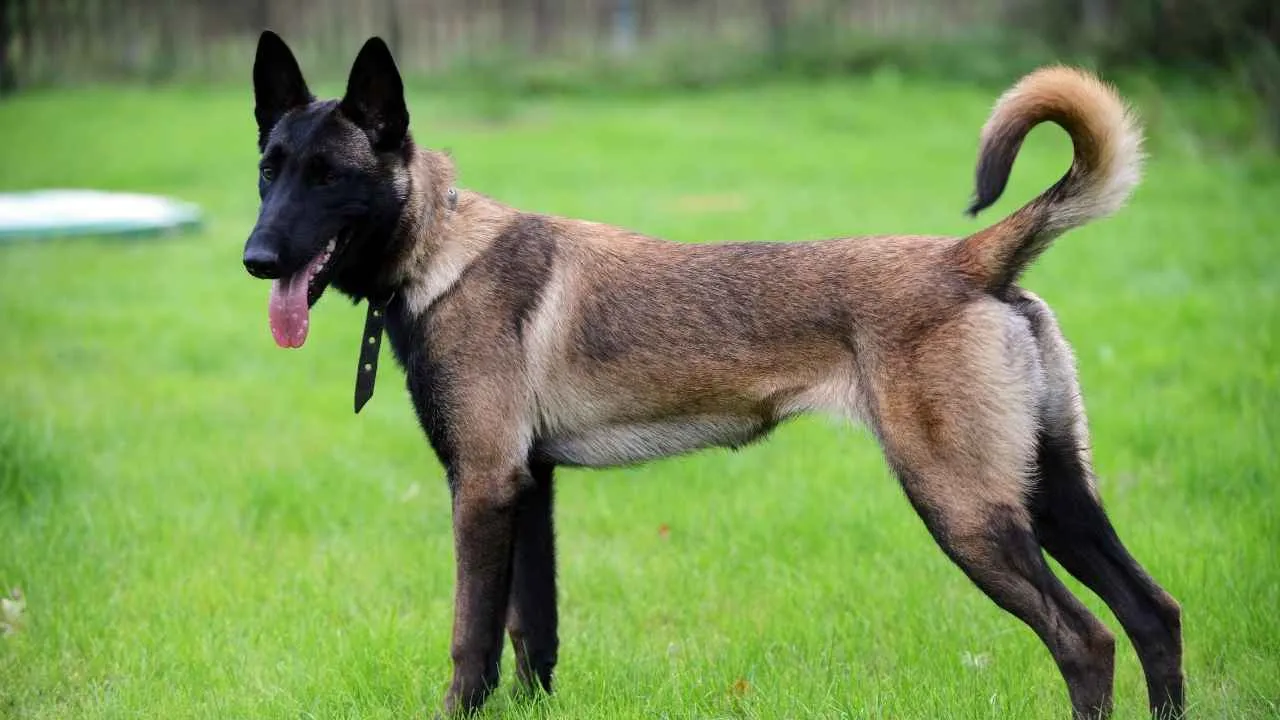
The Belgian Malinois is known for explosive acceleration and rapid directional shifts during on-ground pursuit. Their muscle coordination allows for seamless transitions between sprinting and stillness. This makes them ideal for patrol, perimeter, and high-intensity chase operations.
Alert Temperament and Fast Response
They display an exceptionally fast reaction time to voice and hand cues — even during high-distraction scenarios. With early and consistent training, they can differentiate between threat levels in unfamiliar environments. Their sharp alertness is rooted in strong environmental awareness.
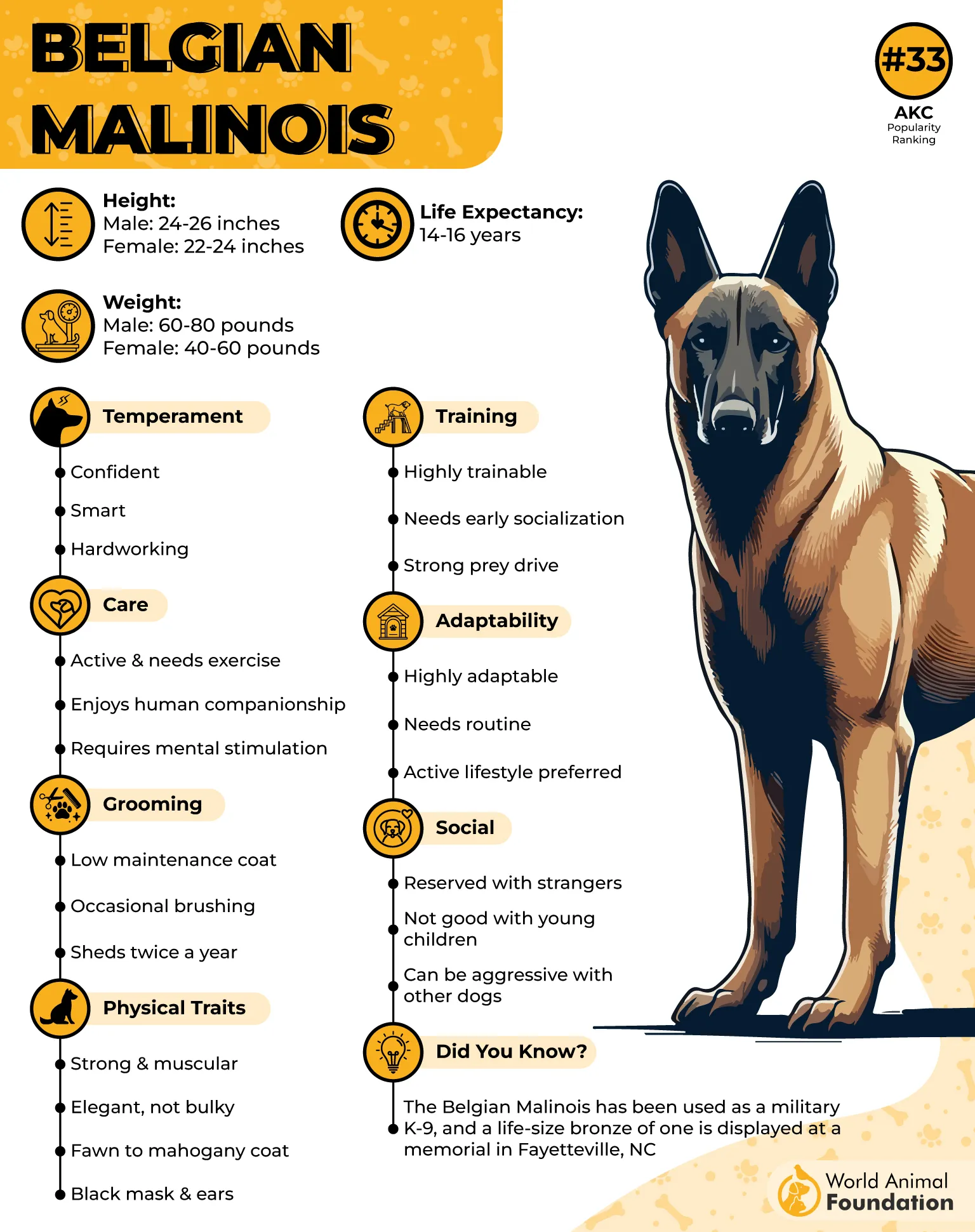
Excellent Vertical Jump and Grip
Belgian Malinois can scale walls and obstacles with minimal runway space, thanks to their rear-leg strength. Their bite force is supported by a full-mouth grip technique often used in takedown drills. These traits are vital in building raids and airborne drops.
Favored by Elite Tactical Units
This breed has been used by several special forces teams, including high-altitude parachute operations. Their weight-to-strength ratio, combined with mental steadiness, ensures safe harnessing and landing.
Conclusion
From intense combat to silent search and rescue missions, these dog breeds have earned their place beside soldiers in real-world military operations. Their speed, discipline, and powerful sense of smell make them more than just trained animals—they’re reliable partners in life-or-death situations.
Since World War II, breeds like the German Shepherd and Belgian Malinois have served as messenger dogs, rescue dogs, and experts in bomb detection. Whether clearing paths or saving lives, these war dogs play essential roles in the success of security forces.
Today, top military dog breeds continue to assist in rapid deployment, patrol, and complex search and rescue missions, proving that few tools are as precise and loyal as a trained dog.


